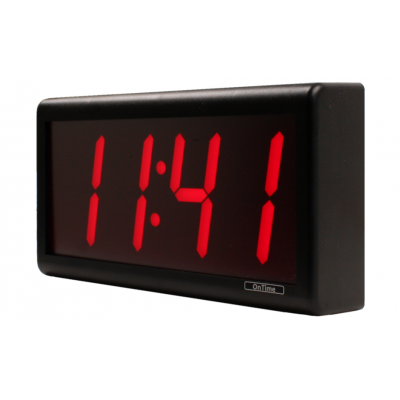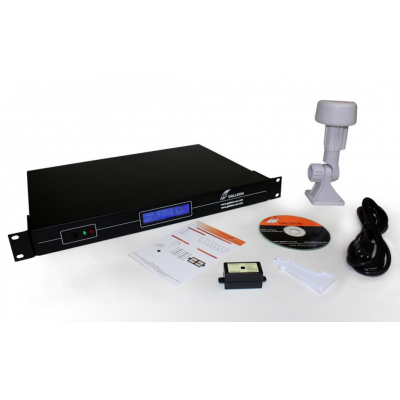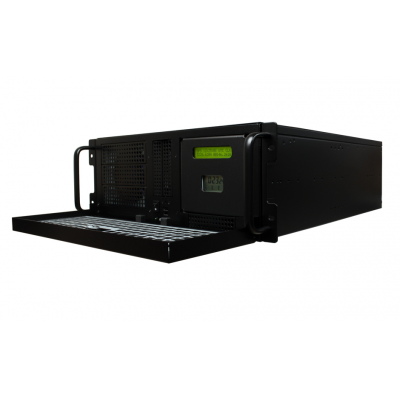
Ethernet NTP digital wall clocks are reliable and easy to read.
Using an Ethernet NTP Digital Wall Clock
Accurate time is more crucial now that it has ever been before. While decades ago, having a wall clock a few minutes fast or slow was no big deal, however, in the modern age, with the internet and global communication, knowing the exact time is crucial for all sorts of organisations. Computer networks, for instance, need to be accurately synchronised to enable communication with other networks, and failing to do so can lead to all sorts of potential errors and problems.
To achieve synchronisation computer networks use what is known as an NTP time server, which receives the time from an atomic clock signal and then distributes it around a network. However, it is not just computer networks that need an accurate and synchronised form of time, but also people in many organisations need to know exactly what the time is, which is where Ethernet NTP digital wall clocks are used.

Choose an Ethernet NTP digital wall clock with four or six digits.
NTP
Network Time Protocol (NTP) is a computer software algorithm that enables synchronisation on a network. It works by taking a single time source and then distributing it to all devices on a network, including Ethernet digital wall clocks. NTP continually checks the devices to maintain precision and accuracy, which mean an Ethernet NTP digital wall clock, once set, will always be accurate and precise.
However, for NTP to maintain network precision it first needs to know the exact time with which to synchronise all devices. It does this by using a NTP server, which receives the time from a secure and accurate atomic clock source.

Ethernet ntp digital wall clocks connect to an NTP server
NTP Servers
NTP servers come in several varieties, depending from where they get their time signals. The two most common NTP servers are the GPS time server and the NTP radio receiver. As the name suggests, the GPS time server receives its time source from the GPS network, which is generated by atomic clocks on the GPS satellites. NTP radio receivers use radio transmission broadcast by physics laboratories such as NPL ([National Physical Laboratory in the UK and NIST in the United States (National Institute of Standards and Time). Both types of NTP network time servers can distribute these time signals across a network of hundreds of devices, including Ethernet NTP digital wall clocks.

NTP servers are available which receive time from a GPS or radio atomic clock, or both.
Ethernet NTP Digital Wall Clock
Ethernet NTP digital wall clocks plug into an NTP server using an Ethernet cable. This means that the time signal is sent from the NTP server directly to the Ethernet NTP digital wall clock, maintaining its accuracy. There are several big advantages to this. Firstly, the Ethernet digital wall clock never needs setting as it is automatically set by the time signal sent from the time server, which means it will always be accurate, and secondly, the Ethernet NTP digital wall clock requires no mains power or batteries as it gets its power form the Ethernet. This means the clock will never lose time in a power outage, and even if the computer network goes down, as soon as it boots back up again the Ethernet NTP digital wall clock will automatically set itself to the atomic clock time signal received by the NTP server.